Sensor and Unison US 120v Rack Fan Noise Information and Sensor Sound Suppression 'SSSh' Hoods and Skirts 'SSSs' 'SPL' or 'DB'
Sound (not noise) may be defined as any pressure variation that the human ear can detect. The number of pressure variations per second is called the frequency of the sound. This is measured in Hertz (Hz). The frequency of a sound creates its distinctive tone. Combinations of these tones make up the everyday sounds we hear be it traffic noise or music. There are low frequencies such as thunder or high frequencies such as a whistle. The normal hearing range for a healthy young person is about 20 Hz (low tone) to 20,000 Hz (high tone).
Another main quantity used to describe sound is the size of the sound pressure level (SPL) fluctuation on the human ear. It is the increase or decrease of sound pressure that allow us to hear things as getting louder or softer in volume. Sound pressure is measured in decibels (dB). This is a scale used to measure how much sound pressure there is at given time and place. Because the dB scale is logarithmic, an increase of 6 dB represents a doubling of the sound pressure level. However, an increase of 10 dB is required before the perceived sound appears to be twice as loud.
In terms of sound pressure level, audible sounds range from 0 dB (silence) to 130 dB (pain). Some examples of dB measurements are: a library / 35 dB, a business office / 65 dB, boulevard traffic / 90 dB, and a jet take-off / 125 dB.
Sound is recorded and measured through a weighting network. There are three different internationally standardized weightings: "A", "B" and "C". The following dB test data was collected using "A" weighting (dBA). Weightings "B" and "C" were not used because they do not correlate well with subjective tests.
Noise may be defined as any unwanted sound, regardless of decibels (dB) or frequency of the sound.
ETC's Sensor Sound Suppression Hoods & Skirts
ETC offers optional sound suppression kits, Sssh and Ssss, for their dimmer racks. These are referred to as "w/ baffle" and "w/ skirt" in the dB test data. The sound emanating from a dimmer rack comes from the cooling fan that maintains a safe operating temperature. The fan noise is noticeably suppressed by the reduction certain frequencies that the human ear is particularly sensitive to. This noisy zone is between 2000 Hz and 5000 Hz. These are higher frequencies that many find annoying. Frequencies in and around this area appear to "stick out" while the lower frequencies blend in with ambient room sounds.
NOTE: Although the sound suppression kits reduce the overall dB level, in some cases certain lower frequencies may increase. This is due to a slight increase in air back pressure caused by the baffling effect. In essence there may be less noisy high frequencies accompanied by more warm low frequencies. This frequency shift changes the sound of the fan into something more pleasant to the ear, hence a reduction in noise.
120V Sensor Portable (SP) Sound Data
SP48
Cumulative Noise Level, dbA @ 1 meter = 55 dbA without skirt, 47.6dbA with skirt
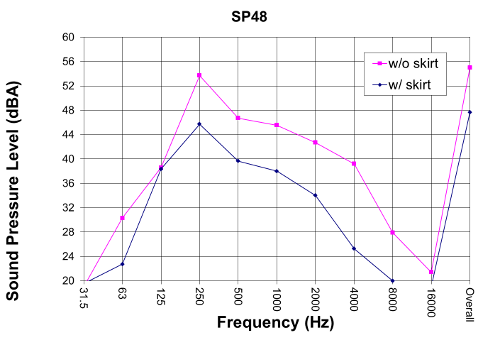
SP24
Cumulative Noise Level, dbA @ 1 meter = 50.3dbA without skirt, 43.2dbA with skirt
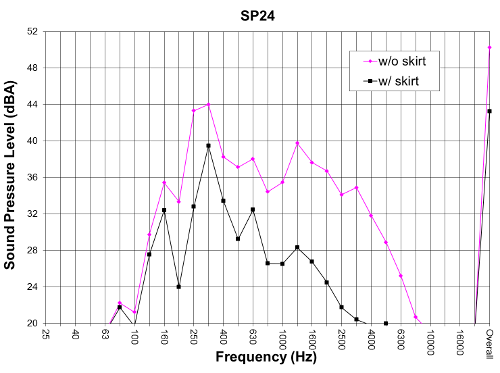
SP12
The SP12 does not use a skirt so there's only one set of noise readings to consider.
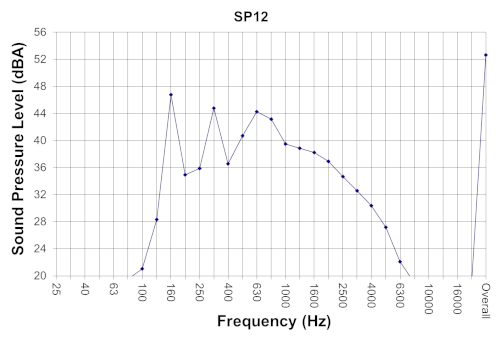
SP6
The SP6 does not use a skirt so there's only one set of noise readings to consider.
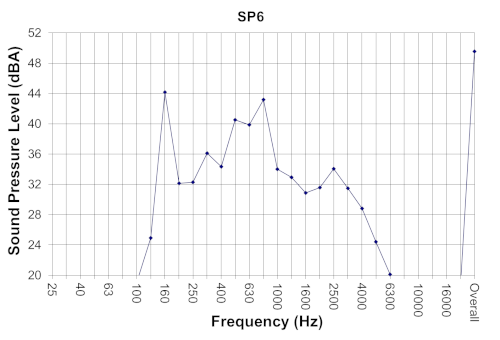
120V Sensor Installation (SR) Sound Data
SR48
Cumulative Noise Level, dbA @ 1 meter = 49.0dbA without SSSH hood, 47.7dbA with SSSH hood
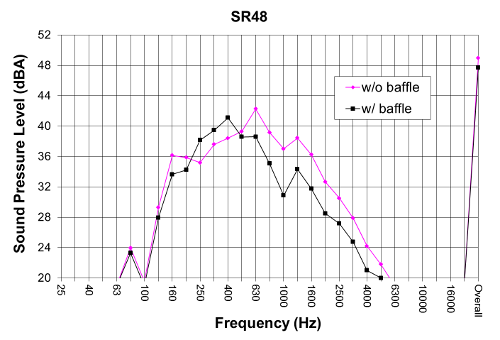
SR24
Cumulative Noise Level, dbA @ 1 meter = 52.0dbA without SSSH hood, 51.5dbA with SSSH hood.
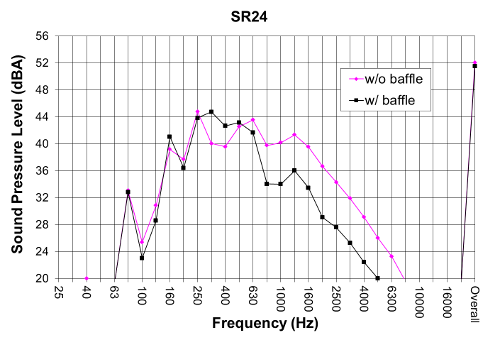
SR12
Cumulative Noise Level, dbA @ 1 meter = 53.3dbA without SSSH hood, 53.2dbA with SSSH hood.
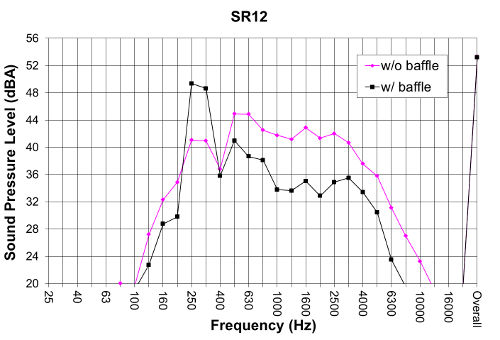
SR6
Cumulative Noise Level, dbA @ 1 meter = 41.0dbA without skirt, 38.9dbA with skirt
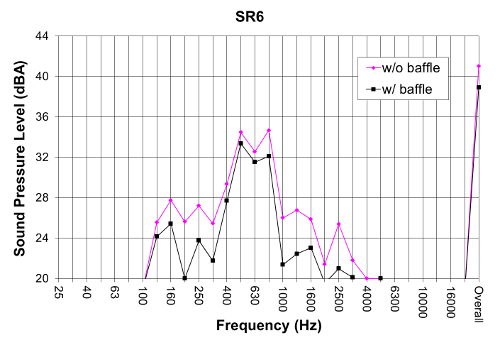
Sensor+ SineWave Sound Data
ETC does not have a specific sound measurement for the complete rack, but the primary noise-generating component is the fan. The Manufacturer specifies the Sound Level for the fan operating at full speed as 65 dB.
Smartpack Sound Data
The Smartpack's noise rating is around 13dB. This is based on the noise rating of the fan.
Note: there could be additional buzz coming from the copper chokes depending on load.
Unison Legacy DR and Unison Paradigm/SmartLink DRd Dimming Rack Sound Data
During the development of the Unison Paradigm/SmartLink DRd dimming rack ETC performed some rudimentary testing of the noise output levels of both a Unison Legacy DR dimming rack and a Unison Paradigm/SmartLink DRd dimming rack.
The testing was done in a stairwell with an ambient noise level of 33dBA.
Unison Legacy DR Rack/
Unison Paradigm/SmartLink DRd Rack Fan dBA Comparison
|
Measurement position |
Background |
DRd |
Unison Legacy DR |
|---|---|---|---|
| Front of rack at a distance of 26.5 inches | 33 dBA | 54 dBA | 52 dBA |
| Top of rack 3 inches above fan | 33 dBA | 71 dBA | 64 dBA |
The testing did not break the noise out into frequencies but it should be noted that the Unison Legacy DR rack has a higher pitched whine in the AC fan which is not present in the Unison Paradigm DRd DC fan. The DRd fan is variable speed so these results would vary depending on ambient temperature and module usage.
Note: this was done with 120v DRD12 and DR12 surface mount.
Unison ER4 Sound Data
The model ER4, equipped with ETC part # B123 Fan will emit 22.5 to 23 dBA. The rating is taken from the fan running at full speed. The fan noise is the only negligible noise generated from an ER4.
